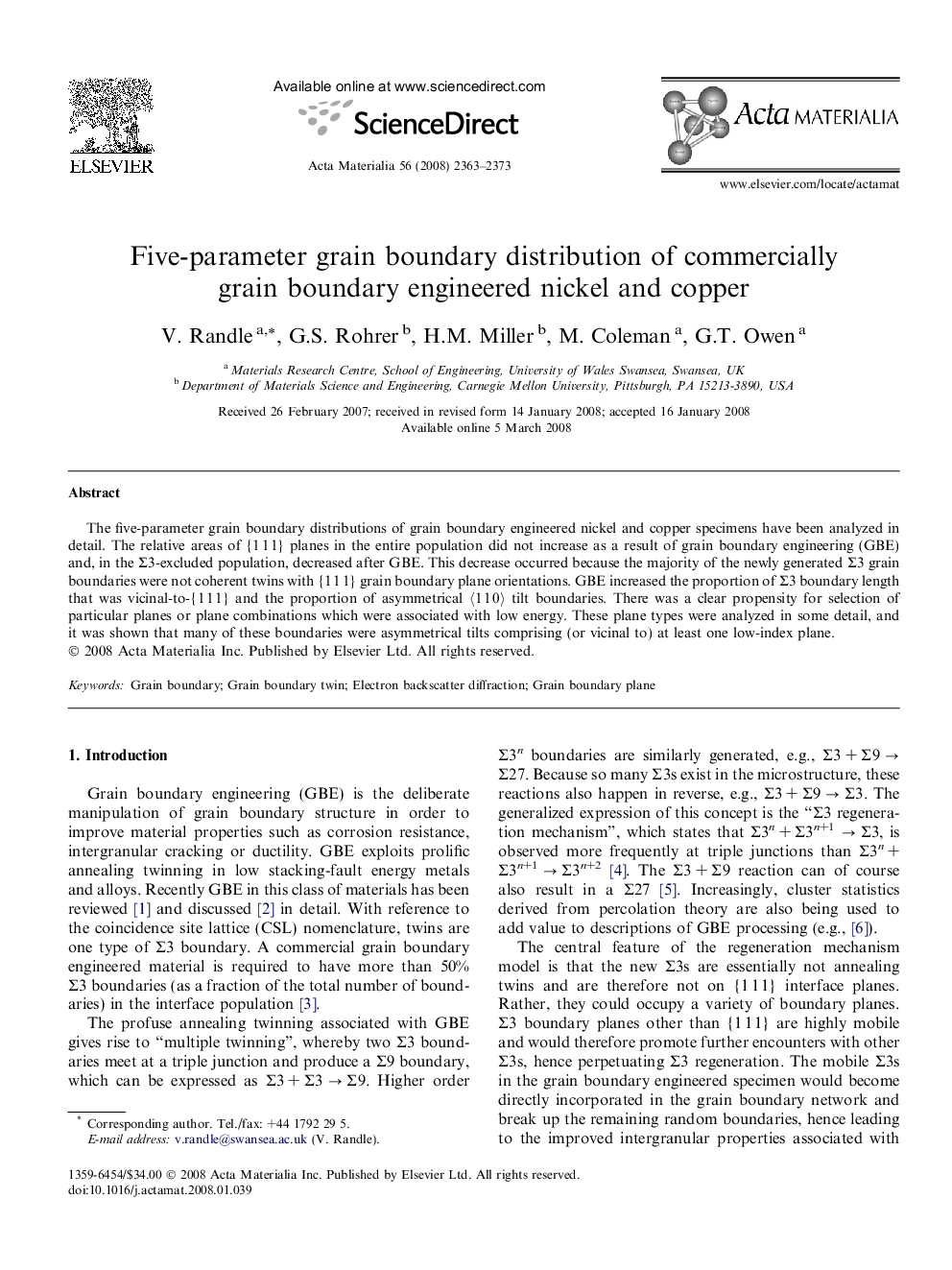| Article ID | Journal | Published Year | Pages | File Type |
|---|---|---|---|---|
| 1449494 | Acta Materialia | 2008 | 11 Pages |
The five-parameter grain boundary distributions of grain boundary engineered nickel and copper specimens have been analyzed in detail. The relative areas of {1 1 1} planes in the entire population did not increase as a result of grain boundary engineering (GBE) and, in the Σ3-excluded population, decreased after GBE. This decrease occurred because the majority of the newly generated Σ3 grain boundaries were not coherent twins with {1 1 1} grain boundary plane orientations. GBE increased the proportion of Σ3 boundary length that was vicinal-to-{1 1 1} and the proportion of asymmetrical 〈1 1 0〉 tilt boundaries. There was a clear propensity for selection of particular planes or plane combinations which were associated with low energy. These plane types were analyzed in some detail, and it was shown that many of these boundaries were asymmetrical tilts comprising (or vicinal to) at least one low-index plane.
